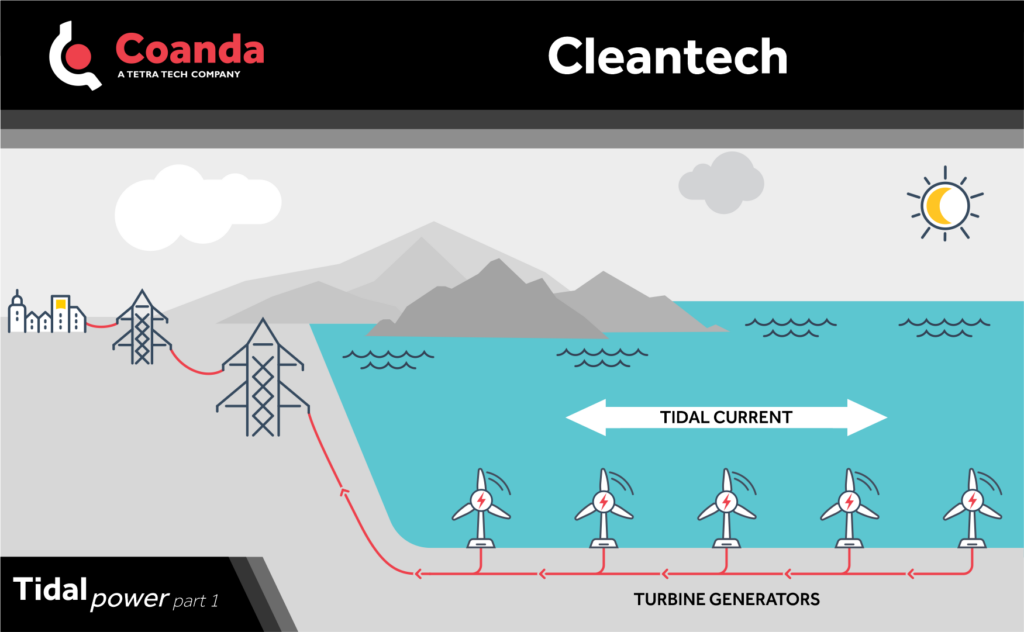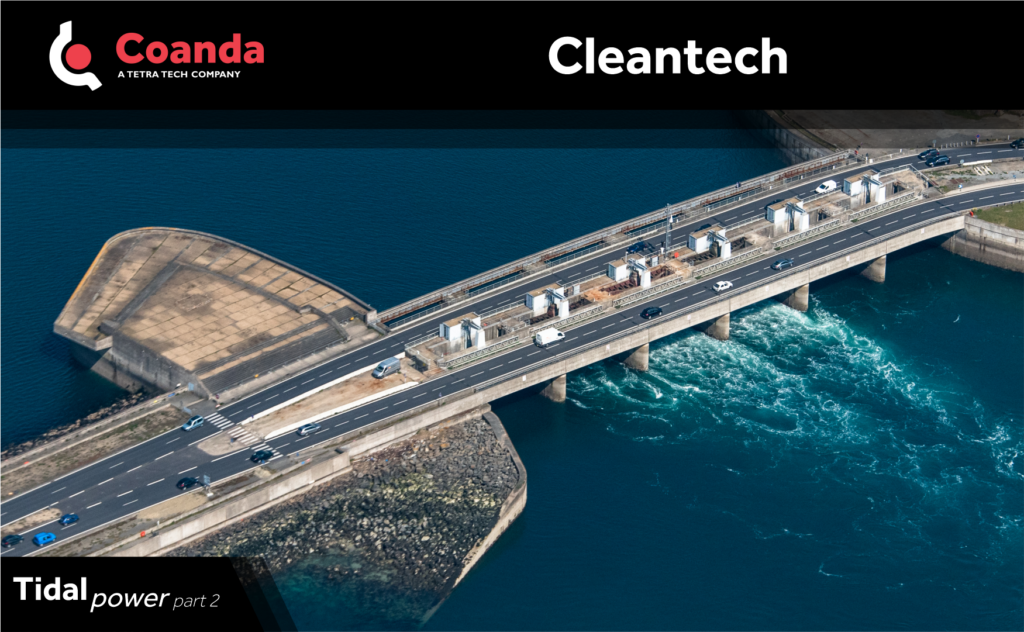Tidal Power
Posted on June 8, 2023 Cleantech
This post was originally published in two parts which have been combined below.
Part 1

For centuries, scientists and astronomers have known that the rise and fall of tides are synchronized with the position of the moon in the sky, and, to a lesser extent, that of the sun. Until recently, this has mostly been of practical interest to sailors and fishermen, for whom it often represents a navigation hazard when sailing close to shore, or sometimes an opportunity to get underway quickly with the aid of a receding tide. It is only recently that the enormous potential energy of tides has been considered as a means of generating power.
Tidal energy uses tidal currents to produce electricity much in the same way as hydroelectric generators produce electricity from fluvial flows: flowing water drives a turbine that is connected to an electric generator synchronized with the grid. Indeed, existing large scale tidal energy projects, such at the 250 MW plant in La Rance, France (completed 1966), and the 254 MW Sihwa Lake generation plant in South Korea (completed 2011), are modelled on hydroelectric dams. However, while hydroelectric plants most often rely on the hydrostatic pressure of water held behind a dam to drive a turbine (potential energy), because of the comparatively small range of tidal elevations, these power plants generally rely on discharge rate (kinetic energy) to produce power. As a result, industry has shifted its focus from barrages which control the level of reservoirs, often used in one-way production, to in-stream installations that produce power during both flood and ebb flows, and which cause less disruption to the natural landscape.
In our next post we’ll explore the other considerations related to such installations
Part 2

In our previous post we introduced tidal power stations and their method of generating electricity with a reduced environmental impact when compared to traditional hydroelectric installations such as dams.
This is not to say that there are no consequences to the environment. The rotating machinery pose a significant injury hazard to marine life, both from contact with blades as well as noise. Additionally, effects of large-scale projects on natural flow patterns and water quality in tidal basins and estuaries are not well understood.
Other important considerations are that tidal turbines are exposed to the more corrosive marine environment, and that plants must be constructed to manage reversing flow. These additional challenges contribute to higher capital and maintenance cost than equivalent equipment used in conventional hydroelectricity production.
Nevertheless, unlike other sources of clean power that rely on weather and climate conditions, tides can be accurately predicted, often years in advance. Thus, in regions where weather and climate conditions are unpredictable or unsuitable for other means of clean energy generation, tidal power represents an attractive alternative.
Progress has been slow to date, with the only two notable projects currently in operation being the previously-mentioned La Rance (pictured) and Sihwa Lake generating stations. However, there are plans to expand the MeyGen array of underwater turbines in the Pentland Firth (Scotland), increasing its capacity from 10 MW currently, to 398 MW in the coming years. With continued investment and technological advancement, tidal power is primed to emerge from obscurity and take on a more prominent role in the future of energy.


